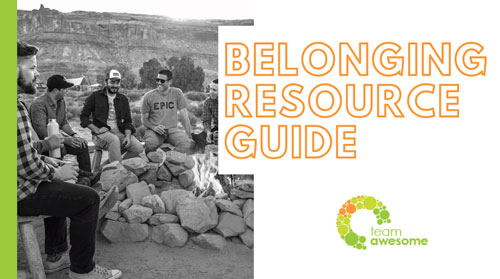Leaders and organizations start to recognize a trend in certain departments, or across the whole organization. And it often comes to a head when someone leaves that had a bright future with you. Yep, I am talking about turnover.
I have often heard high-level leaders ask questions like, “Why do we have so much turnover?” and “What are we doing about this?” or “Let’s do an exit interview to find out what is going on.” And all of those questions were being asked too late and often missing the true root issues. I once had a leader ask about the exit interview feedback from a particularly painful employee loss (she was fantastic in every way), and the missing link was that the feedback was the same as what was already apparent in the engagement metrics (e.g., employee survey data, turnover analytics) and in every exit interview that came before hers. Had we made changes sooner on the feedback we already had, perhaps we would have saved one of our greatest people assets lost in this story. Said differently, your organization already has the answers to why people are leaving, and your very next step is to actually do something about them.
You already have the answers to why people are leaving, and your very next step is to actually do something about them.
Here are a few of your biggest levers to pull to start reversing negative turnover trends:
- Accountability
- Your Leaders
- “The Big Three”: Communication, Recognition, and Rewarding and Meaningful Work
We will explore each of these in a three-part blog series, and this first installment will focus on accountability.
Accountability
Truly taking ownership is your first and most important step. If you cannot achieve accountability and own the turnover as an organization, you will not likely be successful at solving the other pieces. As a leader, you own this. I commonly hear leaders describe why someone left in a way that denotes they were not a factor in the employee’s decision. The reality is that the leader is almost always a significant factor, if not the whole reason. Here is an example:
Leader: “Oh, she is leaving because she is moving to Nashville with her husband.”
Reality based on exit interview: She was uncomfortable with her leader and experience and she looked for another job. It just happened to be in Nashville.
Honest translation: She wanted out so bad that she was willing to uproot her and her husband’s life to move out of state.
As a leader, if you consider this scenario while taking 100% accountability for the turnover, you might ask yourself questions like these:
- How might our relationship have contributed to their leaving?
- What could I have done differently to better understand or engage them?
- How can I apply this learning to the rest of my team to prevent future turnover?
I know that in the real world it might not make sense that you take truly 100% accountability, but if you start from a place of ownership, it will help you easily find the things that you can control and adjust within your own leadership.
Another way to dig down to the root cause of the issue is to ask “Why?” five times. For example, why did that employee leave? They weren’t happy. Why? They didn’t feel like they were being recognized or thanked for their work. Why? And so on, until you can distil down an actionable change you can make.
Leaders own turnover, not HR.
Another critical aspect of owning and improving turnover is recognizing that leaders own turnover for their teams, not HR. Human Resources will lead the processes and aggregate the data and insights, but owning the “whys,” the consequences and the solutions for turnover are the responsibility of the leaders who own the team. Leaders are the reason people stay too, and they get all of the spoils of that. They are often the single biggest lever to make or break the team culture.
In the next installments of this three-part blog series, Demystifying Turnover, we will dig into two other important factors that are affecting your turnover. Look for our next posts further discussing the role of leaders, and what I call “The Big Three”: communication, recognition, and rewarding and meaningful work.
About the author: Katie Rasoul is the Chief Awesome Officer for Team Awesome, a leadership coaching and culture consulting firm. Find out more by visiting www.teamawesomecoaching.com or sign up for our mailing list for awesomeness coming straight to your inbox. Follow Team Awesome on Facebook and Twitter.



Recent Comments